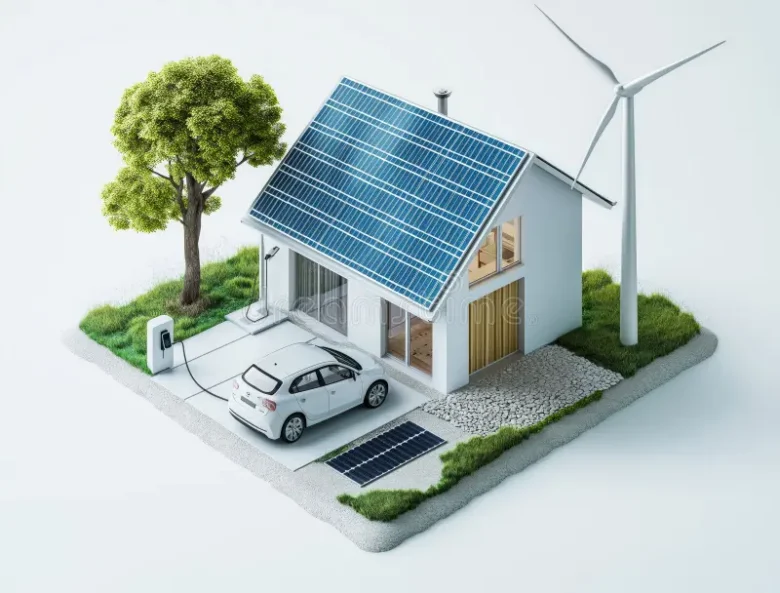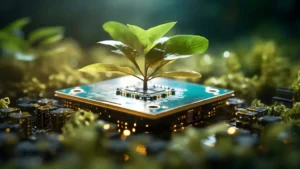Ecotech is transforming renewable energy in an era where climate change is a reality. From smart grids to AI-driven energy forecasting, technology is driving the growth of renewable energy at an unprecedented pace. As governments strive for carbon neutrality and consumers become more environmentally conscious, advanced technology in renewable energy systems is no longer a trend. Innovation and sustainability are leading to efficient, scalable, and greener energy solutions. Wind turbines that respond to weather changes in real time and solar panels that track the sun like sunflowers are revolutionizing renewable energy. This article explores how ecotech is making renewable energy solutions smarter, more convenient, and more effective. Let’s explore how technology and ecology can create a greener future.
The Rise of Eco-Tech in Renewable Energy
Ecotech encompasses a wide range of technologies that reduce environmental impact and improve sustainability. This involves integrating technological tools such as the Internet of Things, artificial intelligence, and machine learning into renewable energy systems that generate electricity from solar, wind, hydro, and geothermal energy. Ecotech solutions emphasize automation, precision, and real-time analysis instead of manual monitoring and predictive modeling. For example, smart meters can report energy usage in real time, allowing consumers and utilities to optimize their energy usage. Drone inspections of solar farms and wind turbines can reduce maintenance costs and improve performance monitoring. These inventions are improving efficiency and setting new standards for clean energy.
AI and Machine Learning Are Transforming Energy Management
Perhaps the most transformative ecotech element in the renewable energy sector today is AI and machine learning (ML). AI systems can predict energy demand, optimize grid connectivity, and predict the weather that will impact solar and wind output. These technologies enable energy systems to learn from past data and make smart decisions without human intervention. AI can predict cloudy days and adjust the grid to use wind or batteries instead of solar. Machine learning algorithms can assess trends in energy usage to recommend times to use energy, minimize waste, and improve efficiency. Data-driven energy reliability, cost, and emissions reductions are made possible. AI management of decentralized energy sources, such as residential solar panels and electric vehicles, will become increasingly important in the transition to a smart, sustainable grid.
Smart Grids and IoT: The Backbone of Modern Energy Systems
Smart grids and IoT devices are transforming the production, distribution, and consumption of renewable energy. Smart grids use digital communications to measure local electricity consumption and adjust supply and demand in real time. Smart sensors, automatic switches, and smart controllers ensure reliable energy distribution for these systems. In addition, IoT devices such as connected thermostats, solar inverters, and smart plugs enable consumers and energy providers to communicate with each other. This makes the energy ecosystem more responsive and resilient, enabling dynamic demand management. IoT-enabled microgrids deliver sustainable renewable energy to remote or unconnected areas. The communication between all these devices enables a continuous flow of energy data, improving assessment and sustainability.
Advances in Solar and Wind Technology Driven
Ecological technology has driven rapid advances in solar and wind technology. Modern solar panels are more efficient, lighter, and more energy-efficient. Bifacial solar panels and solar tracking systems increase energy generation by capturing sunlight from both sides. Wind turbines are also becoming smarter and more flexible. AI-driven predictive maintenance allows turbines to run longer and have less downtime. New turbine designs can capture wind energy from low speeds and high altitudes, making more areas suitable for wind farm construction. Even offshore wind technology is benefiting from floating platforms and submarine cables, which limit the impact on marine ecology. These innovations have lowered the cost per kilowatt-hour and enabled the construction of renewable energy infrastructure in places where it was previously unsuitable.
Energy Storage: The Unsung Hero of Renewable Solutions
Unlike solar panels and wind turbines, energy storage plays a crucial role in renewable energy. Batteries that use eco-technology developments can store peak energy and release it when demand or production drops. Solid-state batteries, flow batteries, and green hydrogen storage technologies are on the horizon, but lithium-ion batteries are more efficient and economical. In weather-sensitive areas, these solutions can ensure grid stability and reliability. Smart energy storage systems can improve energy flows and reduce waste by communicating with the grid and renewables. Some advanced energy storage systems can buy and sell energy on the electricity market, balancing loads and costs. Energy storage transforms intermittent renewable energy into reliable energy, creating a closed loop of sustainable energy.
Conclusion
Combining eco-technologies with renewable energy transforms the energy landscape. These innovations make energy smarter, cleaner, and more efficient, making sustainability a competitive advantage. Artificial intelligence, the Internet of Things, smart grids, and enhanced energy storage technologies will continue to converge to create a resilient ecosystem where clean energy is available on demand, from urban centers to remote villages. Technology is revitalizing renewable energy, and this journey is just getting started. With innovation, collaboration, and investment, ecotech will drive a green revolution.
FAQs
1. What is ecotech for renewable energy?
Artificial intelligence, IoT, smart grids, and enhanced energy storage are all ecotech innovations that are improving renewable energy systems.
2. How does AI help manage renewable energy?
AI can predict energy demand, weather, and system performance to make smarter decisions and distribute energy more efficiently.
3. Why are smart grids so important?
Modern renewable energy infrastructure requires smart grids, which use sensors and automation to balance energy supply and demand in real time.
4. Are energy storage systems essential for renewable energy?
Energy storage systems can store excess electricity and release it when needed, ensuring energy supply even when the sun isn’t shining or the wind isn’t blowing.
5. Can eco-tech reduce energy costs for consumers?
Of course. Eco-tech reduces energy bills and operating expenses through increased efficiency, reduced waste, and real-time energy management.




